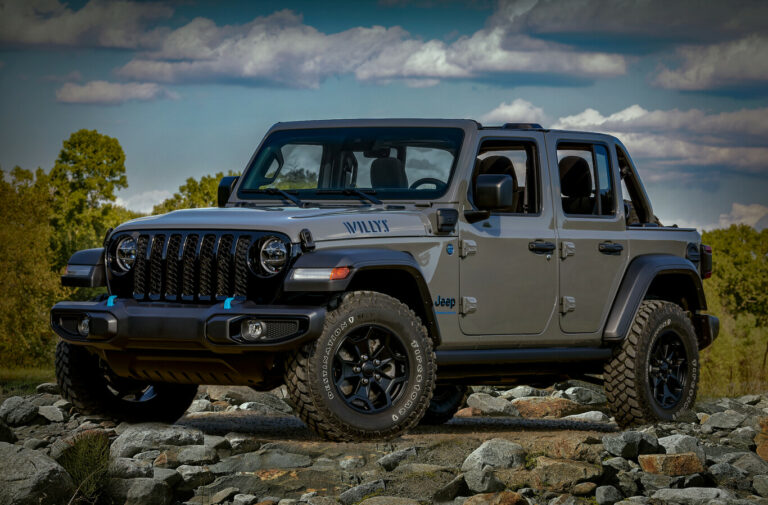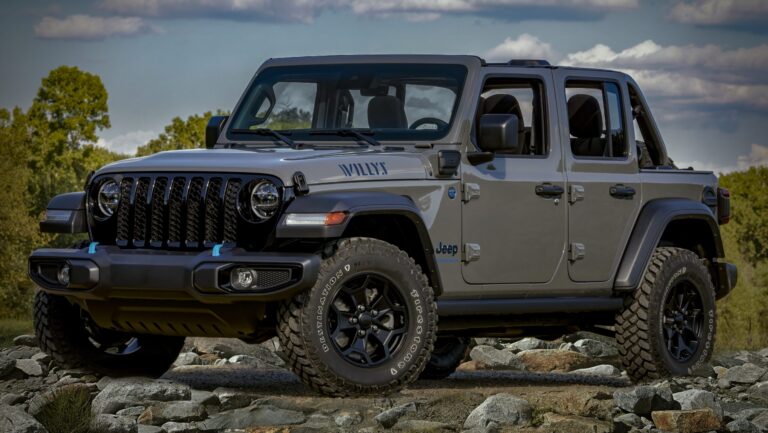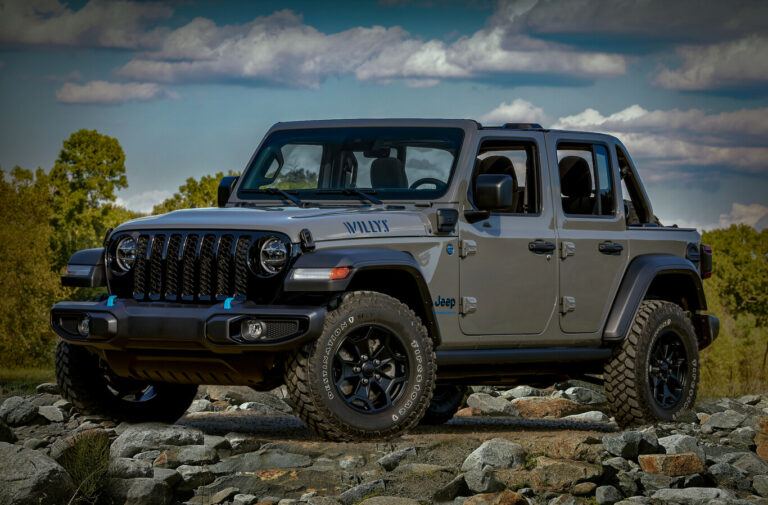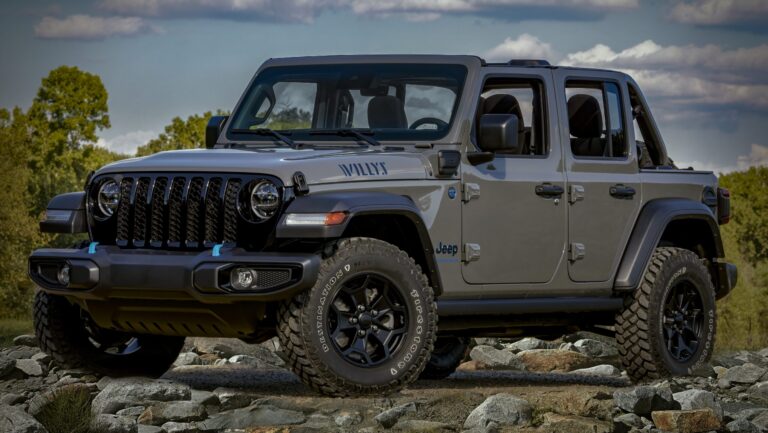Jeep Comanche Trucks For Sale: Your Comprehensive Guide to Finding and Owning an American Icon
Jeep Comanche Trucks For Sale: Your Comprehensive Guide to Finding and Owning an American Icon jeeps.truckstrend.com
In the vast landscape of classic American trucks, few vehicles command the same blend of rugged utility, unique heritage, and burgeoning collector appeal as the Jeep Comanche. Produced by American Motors Corporation (AMC) and later Chrysler from 1986 to 1992, the Comanche, or MJ as it’s known to enthusiasts, was Jeep’s answer to the compact pickup truck market. More than just a pickup, it was a true Jeep, sharing its DNA with the beloved XJ Cherokee, making it a surprisingly capable and versatile machine.
Today, finding a Jeep Comanche for sale is like unearthing a piece of automotive history. These trucks are increasingly sought after by off-road enthusiasts, classic truck collectors, and anyone looking for a distinctive and practical vehicle that stands out from the modern crowd. Their rarity, coupled with their legendary durability and customization potential, means that interest in the Comanche market continues to grow. This comprehensive guide will delve into everything you need to know about finding, evaluating, and owning one of these iconic trucks.
Jeep Comanche Trucks For Sale: Your Comprehensive Guide to Finding and Owning an American Icon
The Enduring Legacy of the Jeep Comanche (MJ)
The Jeep Comanche was born during a pivotal time for Jeep. Developed alongside the groundbreaking XJ Cherokee SUV, the Comanche utilized the same unibody chassis forward of the B-pillar, giving it a car-like ride and handling characteristics uncommon for a truck of its era. This innovative design, combined with traditional body-on-frame construction for the bed, offered a unique blend of comfort and utility.
Available in various configurations, including short bed (6-foot) and long bed (7-foot) options, 2-wheel drive (2WD) and 4-wheel drive (4WD), and a range of engines, the Comanche was designed to cater to a broad market. While early models offered the AMC 2.5L I4 and GM 2.8L V6, the undisputed king of Comanche powerplants arrived in 1987: the legendary AMC 4.0L High Output (HO) inline-six. This engine, renowned for its bulletproof reliability and ample torque, cemented the Comanche’s reputation as a go-anywhere, do-anything truck.
Despite its capabilities and unique appeal, production ceased in 1992, partly due to Chrysler’s decision to focus on full-size trucks and SUVs. This limited production run, coupled with the attrition typical of work vehicles, has made surviving Comanches increasingly rare and desirable.
Why Invest in a Jeep Comanche Today?
The decision to purchase a vintage vehicle like a Jeep Comanche is often driven by passion, but there are practical reasons too:
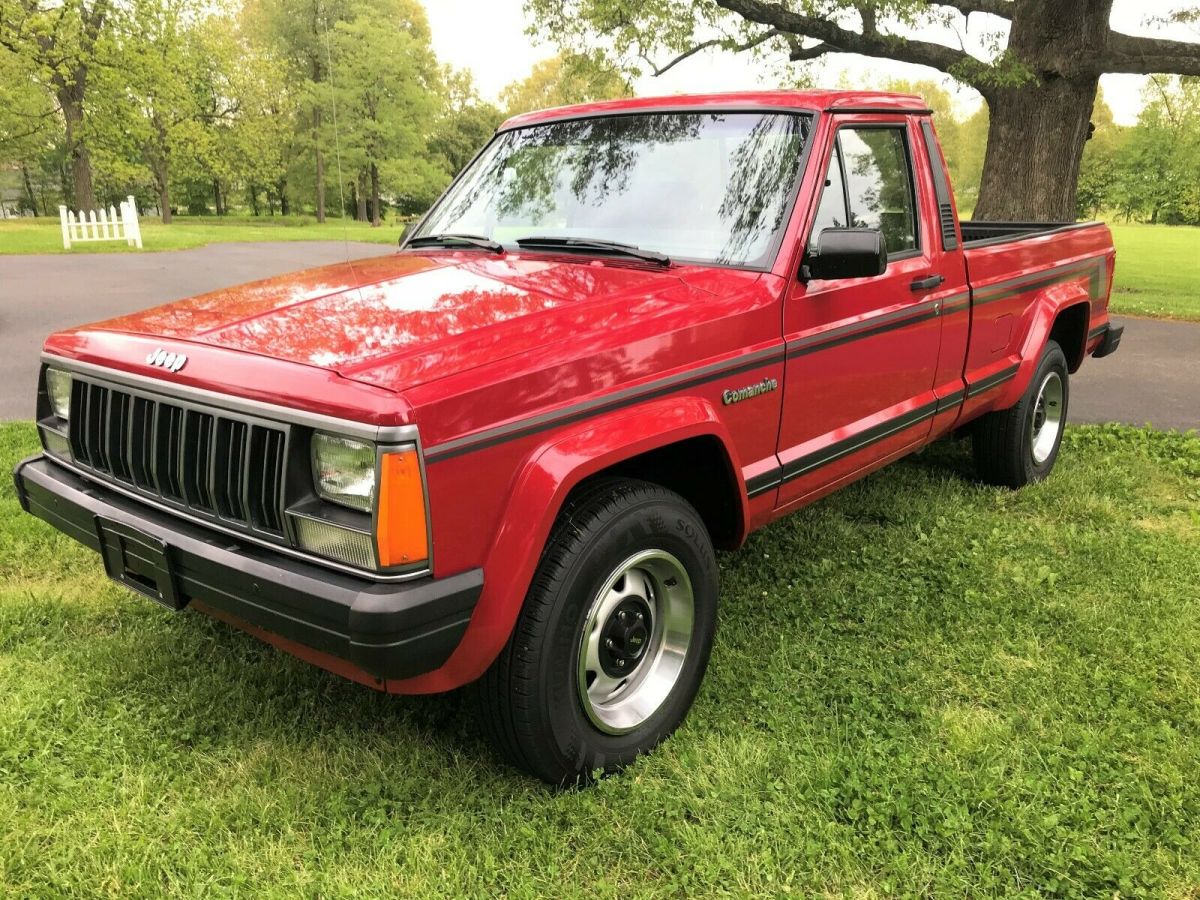
- Unique Style and Rarity: The Comanche’s distinctive looks set it apart from typical compact pickups. Its shared front end with the iconic XJ Cherokee gives it an instantly recognizable Jeep identity. As fewer and fewer remain on the road, their rarity only adds to their appeal.
- Unmatched Durability and Reliability (with the 4.0L): The 4.0L engine is legendary for its longevity, often running for hundreds of thousands of miles with proper maintenance. The robust drivetrain components, especially in 4WD models, ensure capability in challenging conditions.
- Customization Potential: Like its XJ cousin, the Comanche benefits from a vast aftermarket parts catalog. Lift kits, off-road armor, engine upgrades, and interior modifications are readily available, allowing owners to tailor their truck to their specific needs, whether for serious off-roading, overlanding, or simply a unique daily driver.
- Practical Utility: Despite its compact size, the Comanche offers a usable bed for hauling gear, making it a practical choice for light work, weekend adventures, or even as a unique daily commuter.
- Classic Status and Appreciation: As interest in 80s and 90s vehicles grows, the Comanche is steadily gaining classic status. Well-maintained or restored examples are likely to appreciate in value over time, making them a potentially sound investment.

Key Features and Specifications to Look For
When searching for a Jeep Comanche, understanding the key variations and features will help you identify the right truck for your needs:

- Engines:
- 2.5L AMC I4: Standard engine, adequate for light duty, good fuel economy.
- 2.8L GM V6: Early option, less desirable due to reliability issues and lower power output. Avoid if possible.
- 4.0L AMC I6 (Renix & HO): The most sought-after engine. The Renix (pre-1991) and High Output (1991-1992) versions are both excellent, with the HO offering slightly more power. This is the engine for performance, reliability, and ease of parts sourcing.
- Transmissions:
- Manual: Peugeot BA-10/5 (early, less robust) or Aisin AX-15 (more desirable, stronger).
- Automatic: Chrysler Torqueflite 904 (early) or Aisin-Warner AW4 (highly reliable and desirable, especially with the 4.0L).
- Drivetrain:
- 2WD: More fuel-efficient, often found in base models.
- 4WD: Essential for off-road capability. Look for the NP231 (part-time) or NP242 (full-time capable) transfer cases.
- Bed Length:
- Short Bed (6-foot): More maneuverable, slightly less common.
- Long Bed (7-foot): More practical for hauling, more common.
- Trim Levels: From basic "Custom" to more upscale "Pioneer," "Chief," "Laredo," and the sporty "Eliminator," trims offered varying levels of interior amenities and exterior styling. The Eliminator, with its sportier appearance package, is often highly sought after.
Where to Find Jeep Comanche Trucks For Sale
Finding a Comanche can be a treasure hunt. Here’s where to focus your search:
- Online Marketplaces: Websites like eBay Motors, Craigslist, Facebook Marketplace, and dedicated classic truck forums are excellent starting points. Use specific search terms like "Jeep Comanche," "Jeep MJ," or "Comanche pickup."
- Specialty Dealerships & Auctions: Some dealerships specialize in classic or vintage trucks. Auctions, both online (e.g., Bring a Trailer, Mecum) and physical, can also yield results, but often at higher price points for well-preserved examples.
- Dedicated Forums and Social Media Groups: Online communities for Jeep Comanche enthusiasts are invaluable resources. Members often post trucks for sale, offer advice, and can provide leads.
- Word of Mouth & Local Classifieds: Don’t underestimate the power of asking around or checking local classifieds. Sometimes, the best deals are found offline.
What to Inspect Before Buying: A Pre-Purchase Checklist
Buying a vintage truck requires thorough inspection. Bring a flashlight, a magnet, and a friend if possible.
- Rust: This is the Comanche’s Achilles’ heel.
- Frame Rails: Especially under the cab and bed. Look for flaking, holes, or heavy patching.
- Floor Pans: Inside the cabin, under the carpet.
- Rocker Panels: Below the doors.
- Bed: Check the bed floor and wheel wells.
- Door Jambs and Fenders: Common rust spots.
- Engine & Drivetrain:
- 4.0L Engine: Listen for unusual noises (knocks, ticks). Check for oil leaks (rear main seal is common but not always critical). Look for coolant leaks.
- Transmission: Check fluid level and condition. Test all gears, including reverse. For manuals, check clutch feel. For automatics, ensure smooth shifts.
- Transfer Case (4WD): Test 4WD High and Low engagement. Check for leaks.
- Axles: Listen for humming or clunking. Check for leaks at differential covers and axle seals.
- Suspension & Steering:
- Bushings: Look for cracked or worn rubber.
- Tie Rods, Ball Joints: Check for play.
- Steering Box: Look for leaks or excessive play in the steering wheel.
- Leaf Springs/Coils: Check for sagging or broken leaves.
- Brakes: Test pedal feel. Check for even braking. Inspect lines and calipers for leaks.
- Electrical: Test all lights, wipers, horn, radio, power windows (if equipped). Check for hacked wiring.
- Interior:
- Seats: Check for tears, stains, and support.
- Dashboard: Look for cracks.
- Headliner: Check for sagging.
- HVAC: Test heater and A/C (if equipped).
- Documentation: Request service records, title, and any accident history. Ensure the VIN matches.
- Professional Inspection: If serious about a specific truck, consider hiring a trusted mechanic specializing in vintage vehicles or Jeeps for a pre-purchase inspection.
Common Issues, Solutions, and Parts Availability
While the Comanche is robust, like any older vehicle, it has common quirks:
- Rust: As mentioned, rust is the biggest challenge. Solutions range from minor patch panels to full frame-off restorations. Prevention (rustproofing, regular cleaning) is key for new owners.
- Electrical Gremlins: Older wiring can lead to intermittent issues. Most are solvable with patience and a wiring diagram.
- Rear Main Seal Leak (4.0L): A common, often minor oil leak. Not usually a catastrophic issue, but can be messy.
- Vacuum Leaks: Can cause rough idle or poor performance. Easily diagnosed and fixed with new vacuum lines.
- Parts Availability: Good news! Because the Comanche shares so many components with the wildly popular XJ Cherokee, most mechanical and many interior/exterior parts are still readily available new, aftermarket, or from junkyards. Body panels specific to the truck bed are harder to find, as are pristine interior trim pieces.
Pricing Considerations and Valuation
Valuing a Jeep Comanche can be challenging due to the wide range of conditions and configurations. The table below provides general estimates, but actual prices will vary significantly based on location, seller, market demand, and specific vehicle condition.
| Condition Category | Estimated Price Range (USD) | Key Factors Affecting Price |
|---|---|---|
| Project/Parts | $1,000 – $4,000 | Significant rust, non-running, missing components, major mechanical issues. Best for parts or a full frame-off restoration. |
| Fair/Driver | $4,000 – $8,000 | Runs and drives, some rust, cosmetic flaws, needs mechanical attention (e.g., suspension, brakes), basic interior. Good for a budget build or daily driver that needs work. |
| Good/Solid Driver | $8,000 – $15,000 | Minimal rust, strong running 4.0L, good mechanicals, presentable paint, intact interior. May have minor flaws but is reliable for regular use. |
| Excellent/Restored | $15,000 – $30,000+ | Near-showroom condition, minimal to no rust, professional repaint, fully sorted mechanicals, clean interior, desirable options (4.0L, 4WD, Eliminator trim). Show-quality or freshly restored examples. |
Factors that can increase value:
- 4.0L I6 engine (especially HO)
- 4-wheel drive
- Aisin AX-15 manual or AW4 automatic transmission
- Eliminator trim package
- Long bed or short bed (depending on buyer preference and rarity)
- Documented maintenance history
- Originality and lack of heavy modifications (unless professionally done)
Restoration vs. Daily Driver: Making the Choice
Before purchasing, decide on your intended use:
- Daily Driver: If you need reliable transportation, focus on mechanically sound Comanches with minimal rust. Cosmetic imperfections are acceptable. Prioritize the 4.0L engine with an AW4 auto or AX-15 manual.
- Off-Road/Adventure Rig: Look for a 4WD model with a solid frame and drivetrain. You’ll likely modify it, so cosmetic issues are less critical than structural integrity.
- Restoration Project: Be prepared for significant time and financial investment. A complete project will require extensive bodywork, paint, and mechanical overhaul. Look for complete vehicles, even if rough, rather than salvage title or heavily damaged ones.
- Collector/Show Vehicle: Seek out the best possible original examples, ideally low mileage, or professionally restored trucks. Be prepared to pay a premium.
Conclusion: Embracing the Comanche Dream
The Jeep Comanche is more than just an old pickup truck; it’s a testament to Jeep’s enduring legacy of rugged capability and unique design. Its blend of SUV comfort and pickup utility, coupled with the legendary 4.0L engine, makes it a highly desirable vehicle for a diverse range of enthusiasts. While finding a pristine example can be a challenge, the hunt itself is part of the adventure. With careful inspection, realistic expectations, and a passion for these iconic trucks, you can find a Comanche that will provide years of enjoyment, whether it’s conquering trails, hauling gear, or simply cruising down the road, turning heads wherever it goes. The Comanche isn’t just a truck you buy; it’s a piece of history you preserve and a lifestyle you embrace.
Frequently Asked Questions (FAQ) about Jeep Comanche Trucks For Sale
Q1: Why are Jeep Comanches so popular?
A1: Comanches are popular due to their unique unibody/frame hybrid construction, shared DNA with the beloved XJ Cherokee, the incredibly reliable 4.0L inline-six engine, strong off-road capability (especially 4WD models), and their increasing rarity, which gives them classic status.
Q2: Are parts hard to find for a Jeep Comanche?
A2: For mechanical parts (engine, transmission, drivetrain, suspension), parts availability is generally excellent due to shared components with the mass-produced XJ Cherokee. Body panels specific to the bed, unique trim pieces, and some interior components can be harder to source new, but used parts are often available through enthusiast groups and junkyards.
Q3: What’s the best engine for a Jeep Comanche?
A3: Without a doubt, the AMC 4.0L inline-six engine is the most desirable. It offers the best balance of power, torque, and legendary reliability. The High Output (HO) version from 1991-1992 offers a slight power bump, but both Renix (pre-1991) and HO are excellent choices. Avoid the early GM 2.8L V6 if possible.
Q4: Is the Jeep Comanche reliable as a daily driver?
A4: Yes, a well-maintained Jeep Comanche, especially one equipped with the 4.0L engine and AW4 automatic transmission or AX-15 manual, can be a very reliable daily driver. Like any vintage vehicle, it will require regular maintenance and attention to common wear items, but the core components are extremely robust.
Q5: What’s the main difference between a Jeep Comanche and a Jeep Cherokee (XJ)?
A5: The primary difference is the body style. Both share the same unibody chassis from the front bumper to the B-pillar, including the engine, transmission, front suspension, and interior. However, the Cherokee is a fully enclosed SUV, while the Comanche is a pickup truck with a separate bed, featuring a unique rear frame section.
Q6: What should I look out for regarding rust on a Comanche?
A6: Rust is the biggest concern. Pay close attention to the frame rails (especially under the cab), floor pans, rocker panels, bed mounts, and rear wheel arches. Surface rust is common, but through-rust or heavily patched areas indicate a more significant problem.
Q7: Is a Jeep Comanche a good first classic truck?
A7: Yes, for the right person. Their mechanical simplicity, parts availability (for core components), and strong online community make them approachable for new classic vehicle owners. However, potential buyers should be prepared for typical vintage vehicle maintenance and the possibility of addressing rust.

